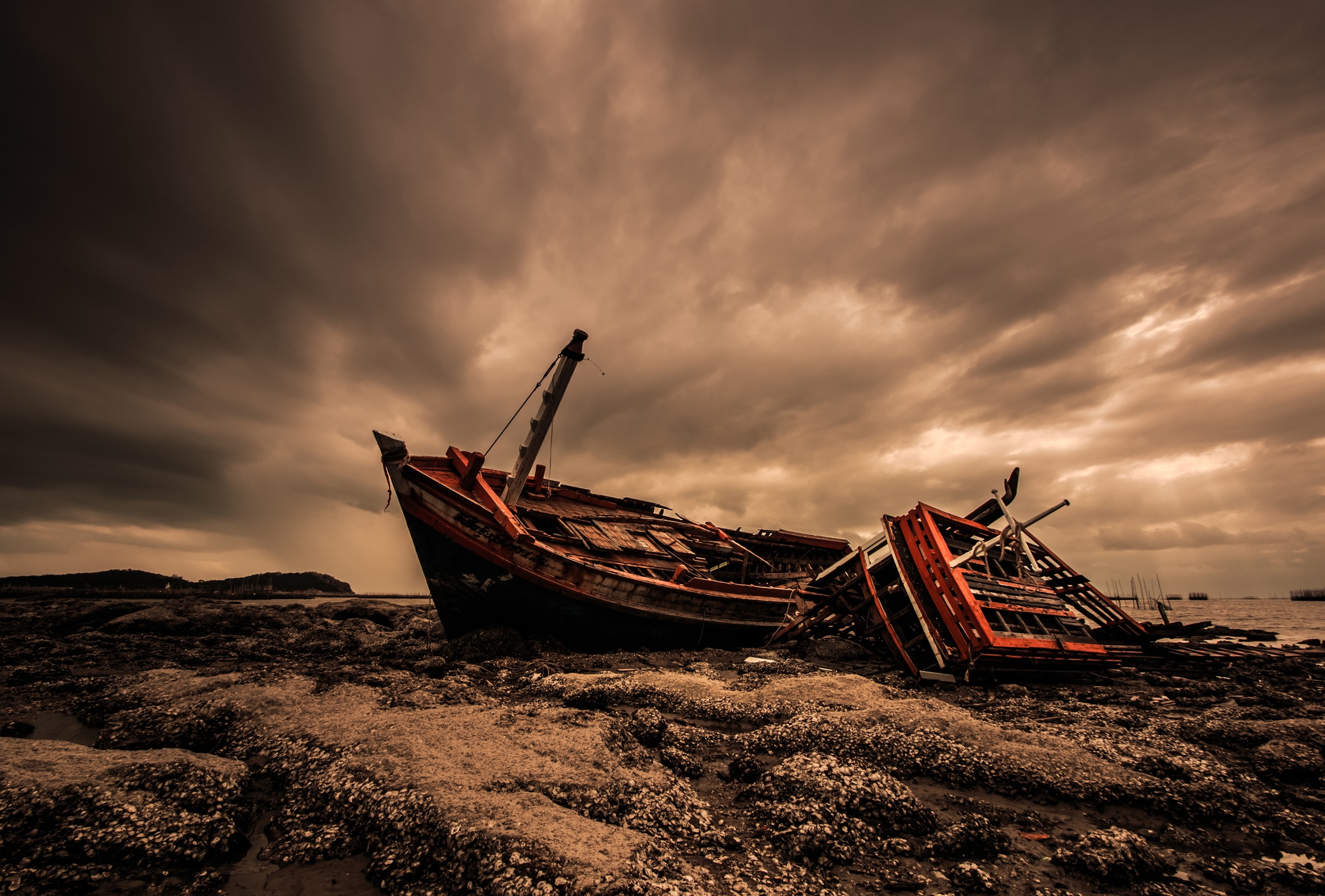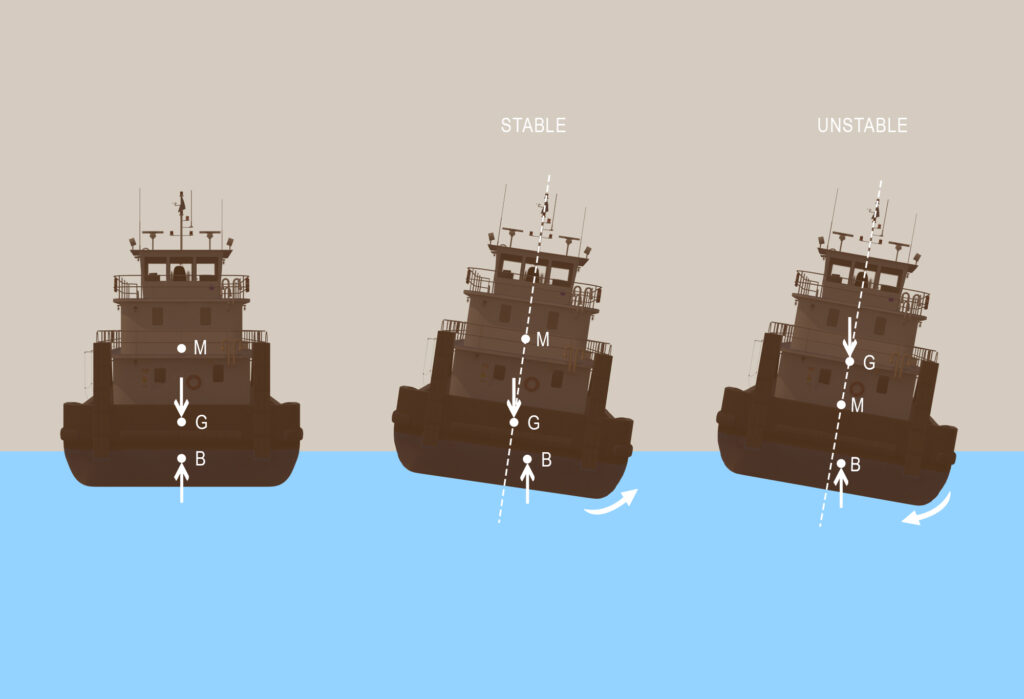
Have you ever wondered how large metal boxes like houseboats can stay afloat? Or what makes them sink? Although the risk of a houseboat sinking is small, that doesn’t make them unsinkable. All types of boats will have their own unique set of problems and ways to deal with them.
You’ll need to know what the most common problems are, how to fix them, and when to seek help. When a houseboat sinks, most often it’s caused by neglect or hull damage to the boat itself, by being overloaded with cargo, or by not keeping up the maintenance.
However, houseboat owners should be equipped with this knowledge that can mitigate most of the risk by properly maintaining it.
In this post, we will discuss several causes of houseboat sinking and show you how to prevent such situations.
Table of Contents
What Are the Common Causes of Houseboat Sinking?
If you’re an owner of a houseboat, then you already know the joys and perils of boat ownership. Whether you’re living on the open water or moored by the marina, the responsibilities associated with boat ownership are many.
When owning a houseboat, it is very important to keep your houseboat in tip-top condition. A sinking houseboat is most typically caused by serious leaks or damage to the hull.
However, most sunk vessels are caused by a combination of these factors:
- Hull Leaks – A leak can occur in the hull, propeller shaft packing gland or even in the holding tank that is sitting very close to the hull due to some kind of accident or damage. If a leak is not detected in time, it can fill up your bilge and internal compartments, sinking your boat.
- Boat-Related Accidents – Boat accidents are mostly caused by human error. For instance, if the hull gets damaged by rocks or coral by collision or collision with another boat. In these cases, the hull of the boat needs immediate attention and repair.
- Clogged Scuppers/faulty discharge valves – Scuppers are the openings at the sides of the boat. It is important to keep them clear of debris at all times to allow water to drain out of the boat properly. Although this might not be the main cause of vessels sinking, it is a contributing factor. Unable to discharge unwanted water overboard will pose a serious issue of cabin flooding.
- Overloading – Overloading a boat is a major cause of houseboat sinking. It can be caused by the boat being overloaded with excess weight. Once a houseboat becomes overloaded it can sink below the desired waterline, making it susceptible for water to come overboard and flood the cabin.
- Improper weight distribution & unsecured loads – Do not underestimate this. Many boat owners have disregarded or forgotten the fact that having a high center of gravity (CG) makes the vessel unstable and easy to roll over. The same goes for loading on one side of the boat and unsecured loads. This causes the vessel to list (permanent inclination of the ship).
- Bilge Pump Failure – The bilge pump is a mechanical device that removes water from the boat. If the bilge pump fails, water can accumulate inside the boat. Similarly, this might not be the leading cause of sinking but not being able to discharge water may lead to the same catastrophic result.
- Weather-Related Accidents- Weather conditions may be unpredictable at times. High winds, rough waves, or heavy rains can cause a lot of water to enter that may be overwhelming for the bilge pump.
Boat Stability (Explained)
It is very important for people who own a houseboat to ensure the safety of everyone here are a few ways you can prevent your houseboat from sinking. If you are interested to know more about the technical aspect of houseboat stability, here is a more detailed and graphic explanation. Otherwise, you can skip to ‘how to prevent a houseboat from sinking’.

To keep things as simple as possible, any vessel stability is governed by these 3 points (B, G, M). B, Buoyancy keeps it afloat, and the position changes when it heels (roll from side to side). The G, center of gravity is fixed if the weight distribution is secured on board. These 2 forces when in an upright position balance each other.
If there are external factors like waves or wind, the heel (temporary inclination) changes the buoyancy position which creates a righting moment that rotates the boat back to its original position. This makes the boat stable.
M, is the Metacentre, which the boat rotates about this position. You can think of M as an imaginary point and its position if lower than G (Negative GM value), it will cause the boat to capsize. As shown on the right diagram, the force of B and G can cause the boat to roll over.
So, to keep the boat stable, you need to keep water out and your center of gravity as low as possible. This will keep the GM in a positive value. The natural buoyant force will rock about its metacenter and ultimately restore its upright position.
How to Prevent Houseboat From Sinking?
Check for any Leaks
Water can get in through several places. Always check the sewage pipes, freshwater system and holding tanks for any leaks. If you find any of these places are leaking, then you should try to repair them immediately.
Check Your Designed Weight Capacity
The weight capacity is the amount of weight you can safely carry on the boat. Take note of the weight of an object and evenly distribute the weight to avoid increasing the center of gravity. If you want to store heavy and bulky items, store them as low as possible, preferably below the main deck. Do not overload the port or the starboard side. Make sure you balance the storage throughout the cabin.
Make Sure Scuppers are not Clogged
A clogged scupper will prevent water from draining from the boat. You should clean out any debris that may be blocking your scuppers regularly.
Check for any Signs of Hull Damage
This is fatal but any signs of damage should be easy to spot. Also, check the exterior for any signs of corrosion. If there are any signs of corrosion, you need to replace it as soon as possible.
Keep a Log of Maintenance and Repairs
Log down what needs to be done and make a record of all inspections and maintenance completed. Check the log regularly to ensure everything is properly maintained. This might be helpful to gauge the life expectancy of parts or the frequency of maintenance of your houseboats.
Check the Bilge Pump
You should always make sure that you check the functionality of the bilge pump and the bilge alarm. As houseboats are not erect with watertight compartments and hatches, rainwater and waves might flood your cabin. So, without a functional pump to discharge water, the risk of sinking is high. So do make sure you have other alternatives to prevent your cabin and engine room from flooding.
Final Note
Houseboats are used for many purposes along waterways for many years now. Its reliability to stay afloat of course depends on the manufacturer’s design but more importantly, the boat owners managing it. Even the best-built houseboats will sink if you overload them.
All in all, if you follow this guide, you should be able to greatly reduce the chance of sinking. Nevertheless, you still should not rule out the possibility of sinking and prepare safety measures. Keep enough floatation equipment like life jackets for you and your guest. Don’t take safety for granted!
I really hope that this article provided you with some knowledge of houseboats!
Share with your fellow boat owners on social media if you think it’ll be a good read for them!

